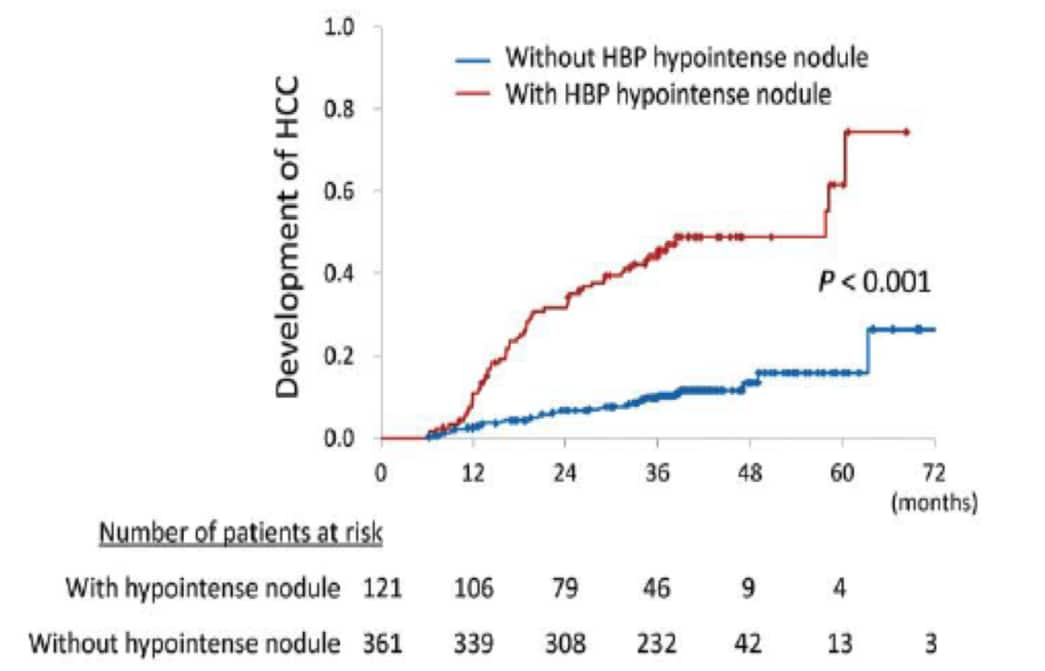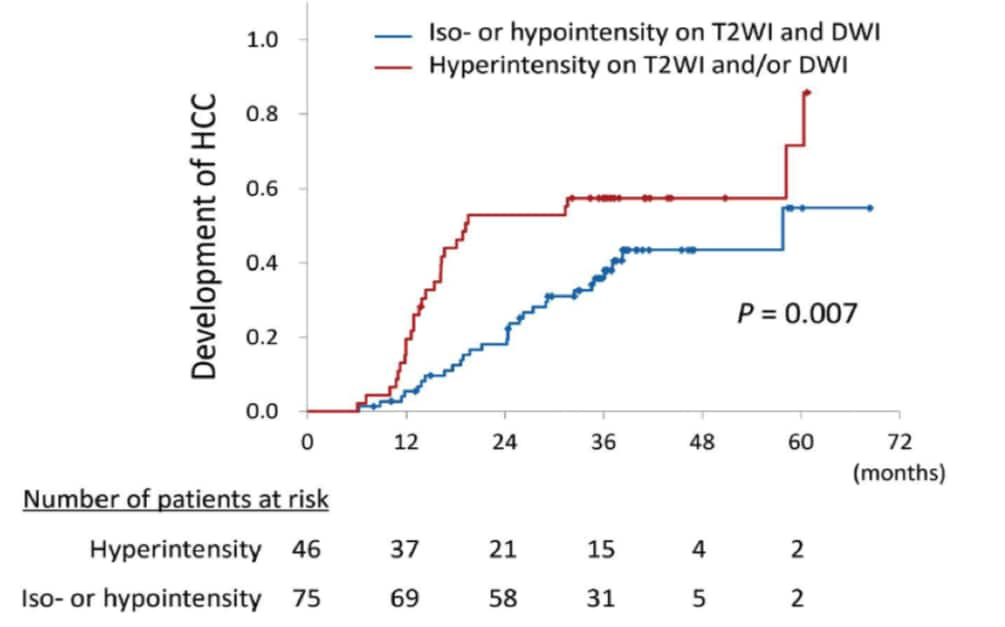Magnetic resonance imaging-based risk factors of hepatocellular carcinoma after direct-acting antiviral therapy: multicenter observational study
Gd-EOB-DTPA MRI could predict the development of hypervascular HCC following HCV DAA therapy.
A multicenter study3 identified the risk factors associated with HCC development after sustained virologic response (SVR) following direct-acting antiviral (DAA) therapy for HCV. This study included 482 patients with chronic HCV infection, who achieved SVR at post-treatment week 12 (SVR12) and underwent Gd-EOB-DTPA MRI to confirm HCC absence at enrollment. All participants were periodically followed up and Gd-EOB-DTPA MRI was performed every six months. Analysis revealed that the incidence of HCC development was significantly higher in patients with a history of HCC and the presence of HBP hypointense nodules without APHE (Fig. 1). Additionally, the incidence of hypervascular HCC was significantly higher in patients with HBP hypointense nodules lacking APHE but demonstrating hyperintensity on T2-weighted image (T2WI) and/or diffusion-weighted image (DWI) (Fig. 2). These results suggest the need for a more intense monitoring after DAA therapy in patients with HBP hypointense nodules without APHE.
Fig. 1. Cumulative rates of HCC development based on the presence HBP hypointense nodules

HBP, hepatobiliary phase; HCC, hepatocellular carcinoma.
Fig. 2. Cumulative rates of HCC development based on the signal pattern of HBP hypointense nodules without arterial phase enhancements

DWI, diffusion-weighted image; HBP, hepatobiliary phase; HCC, hepatocellular carcinoma; T2WI, T2-weighted image.
Gd-EOB-DTPA MRI emerges as a pivotal tool for personalized HCC management. This comprehensive approach, integrating imaging insights with clinical data, advances our understanding and enhances the precision of therapeutic interventions for individuals with varying HCC risks.
References:
- Ichikawa, Shintaro, et al. Magnetic resonance imaging-based risk factors of hepatocellular carcinoma after direct-acting antiviral therapy: A multicenter observational study. Hepatology Research (2023): 1–11.
https://pubmed.ncbi.nlm.nih.gov/37470828/


